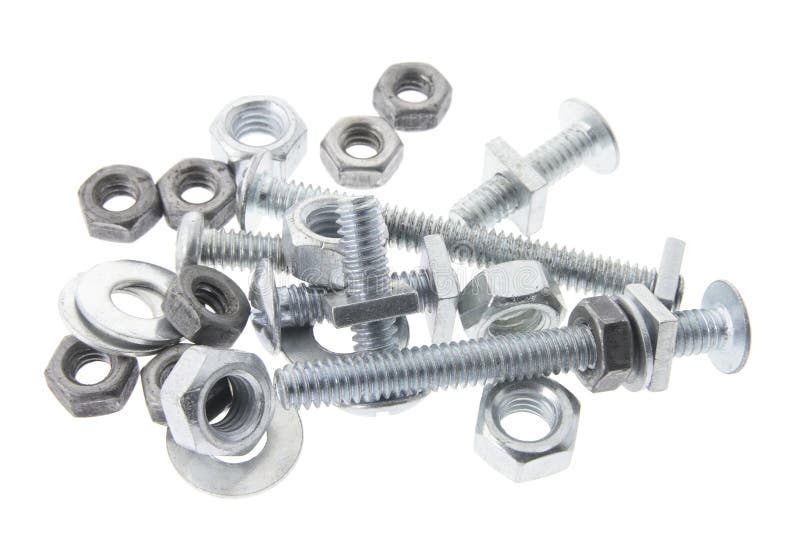Cutting-edge Design: Emerging Trends in Nuts and Bolts
When it comes to the realm of engineering and construction, the value of fasteners cannot be overstated. These small and powerful fasteners are the unsung heroes in numerous projects, ranging from complex machinery to sturdy buildings. As we consider the future of engineering, it’s crucial to grasp the emerging trends shaping the design, materials, and functionality of these key components. More and more, industry professionals are looking at the various types and applications of fasteners, making sure that every project is furnished with the appropriate fastener to fulfill the requirements of contemporary construction and repairs.
In this comprehensive guide, we will delve into the broad spectrum of nuts and bolts, discussing from the basic design principles to advanced applications in various industries. Whether you’re a do-it-yourself enthusiast, a qualified contractor, or a car repair specialist, grasping the differences in the types, grades, and materials of bolts is crucial for selecting the most effective fasteners for your particular needs. In our exploration of these cutting-edge engineering developments, you will understand how to choose the right nuts and bolts, enhancing the quality and longevity of your endeavors while confronting the issues presented by a variety of environments and materials.
Types and Functions of Fasteners and Bolts
Fasteners and bolts are crucial components in a range of engineering and construction projects, serving the critical function of fastening materials together. The most widespread type of screw is the hexagonal screw, which features a six-sided head that allows for easy gripping with a wrench. Additionally, there are carriage screws, known for their curved heads and flat shoulders that stop rotation when tightened. Lag bolts, or lag screws, are designed for robust applications, providing robust connections in wood and other solid materials.

In terms of nuts, the regular hex nut pairs with hex screws and is widely employed for general fastening needs. Secured nuts offer additional security by stopping unraveling due to movement, making them suitable for mechanical applications. Flange nuts come with a attached washer that distributes load more uniformly, ideal for delicate materials where standard fasteners might harm the surface. Each type of fastener serves a particular function, ensuring a tight fit and optimal performance.
Understanding the different substances and finishes used for nuts and bolts is also crucial. Steel, stainless, brass, and titanium are common materials, each selected based on durability, rust resistance, and weight requirements. Finishes like galvanized plating and coating enhance resistance, particularly for outdoor applications. Being aware of these differences allows for smart decisions when selecting the right hardware for particular projects.
Elements and Coatings
The choice of substances for fasteners and hardware plays a key role in their performance and use. Common materials include iron, brass, and aluminum, each offering unique properties suited for different conditions. Iron is chosen for its strength and durability, making it ideal for high-load applications. Copper, known for its corrosion resistance and visual appeal, is often used in plumbing and electrical components. Titanium, while costlier, offers exceptional strength-to-weight ratios and tolerance to extreme temperatures, making it suitable for aerospace and high-performance applications.
Coatings also significantly affect the durability and function of nuts and hardware. Zinc plating is a popular choice for fasteners used in exterior environments, providing a barrier against oxidation and decay. Galvanization, a more robust process, involves applying a thicker layer of zinc, making it ideal for severe conditions. Additionally, different powder finishes can be applied to enhance look and additionally protect against external harm. Understanding these finishes is essential for selecting fasteners that will endure specific environments.
When selecting nuts and hardware, it's also important to consider the potential for electrolytic corrosion when varied metals are used in combination. Fasteners made of dissimilar materials can lead to accelerated corrosion if not properly protected. Finishes and finishes play a vital role in reducing this threat, helping ensure that the integrity and longevity of the nuts and bolts are preserved in their proper applications.
Buyer Guides and Comparisons
When choosing nuts and bolts for your project, it is essential to understand the differences between SI and standard fasteners. https://key-siegel.hubstack.net/10-unique-uses-for-nuts-and-bolts-you-never-knew are generally used in most international applications, especially in the EU, while imperial sizes are common in the United States. Knowing which system your project requires can help prevent compatibility issues and ensure that you are using the correct sizes for your specific requirements.
Accurate measurement of nuts and bolts accurately is another important aspect of purchasing fasteners. To measure effectively, you need to determine the size, length, and thread pitch. For bolts, the diameter is taken at the shank, while nuts require measuring the inner diameter. Additionally, thread pitch indicates how tightly the threads are spaced; ensuring that the pitch matches both the nut and bolt is essential for a secure fit. Utilizing calipers can provide precise measurements, facilitating a better match for your project needs.
As you shop for reliable fasteners, consider factors such as material, coating, and strength ratings. Different materials, such as stainless steel, brass, or titanium, offer distinct benefits in terms of durability and rust resistance. Additionally, coatings like zinc plating or anodization can improve longevity in outdoor applications. Understanding how to compare these characteristics will help you make informed decisions that ensure the fasteners you choose not only meet safety standards but also function successfully in their designated applications.